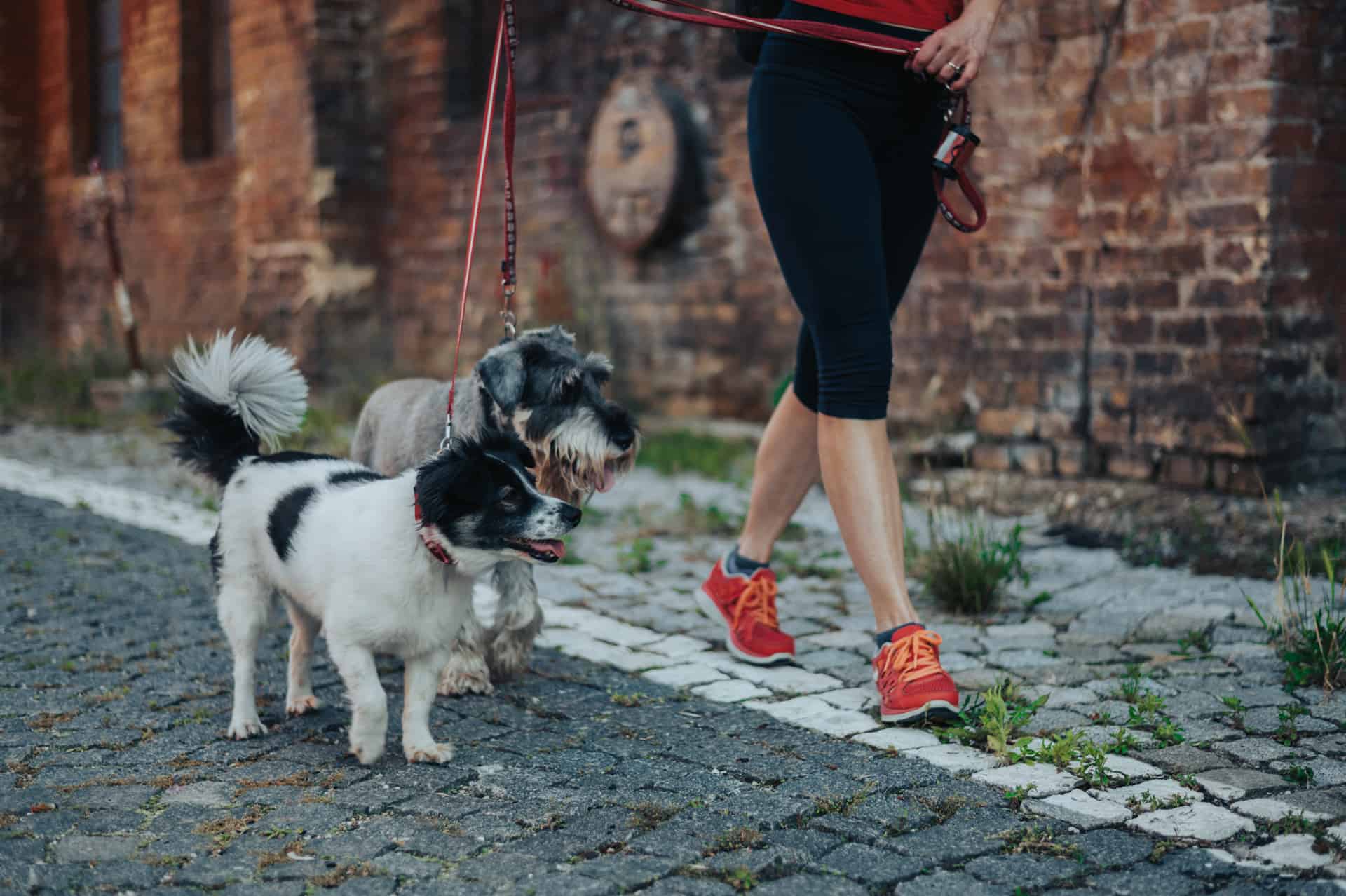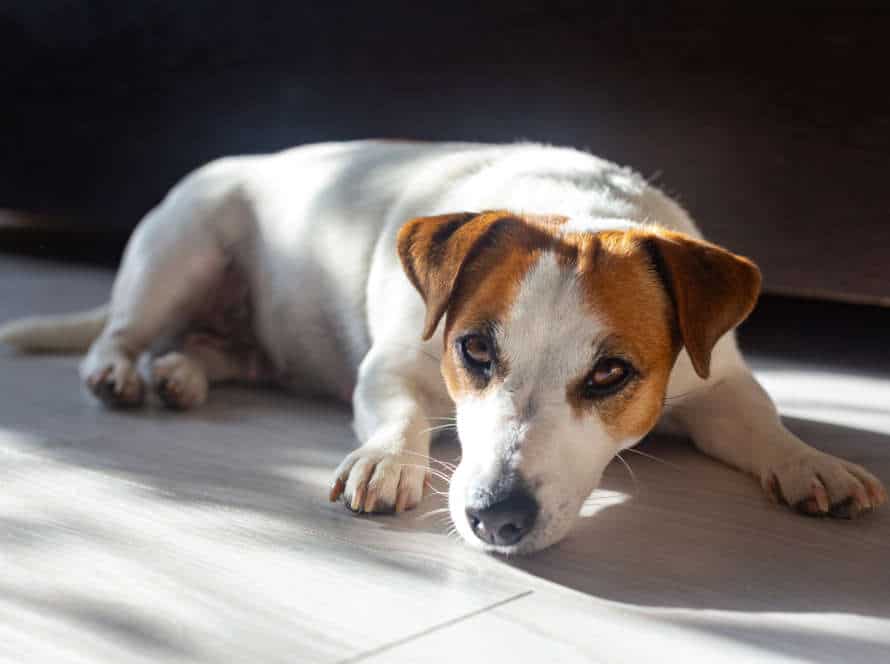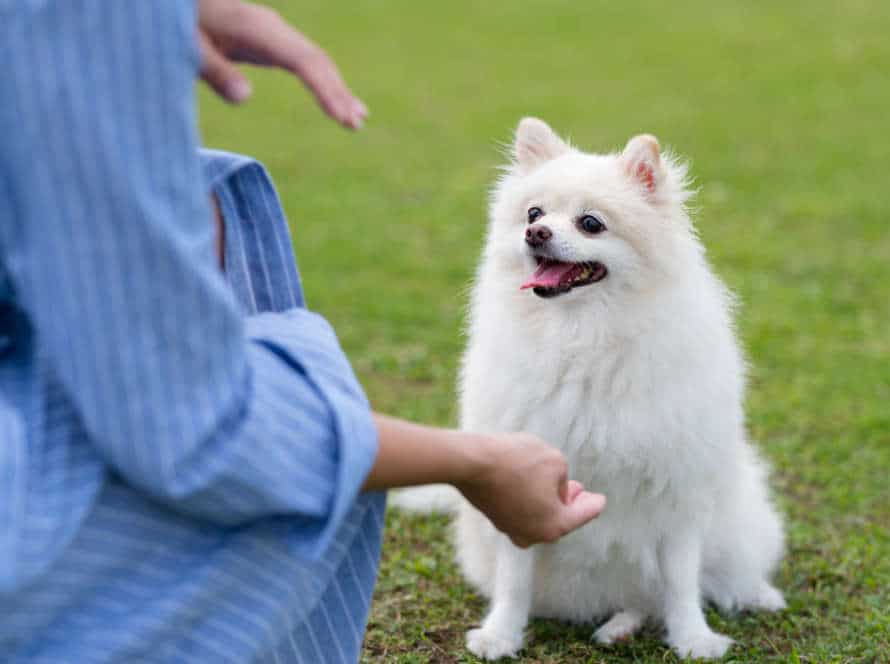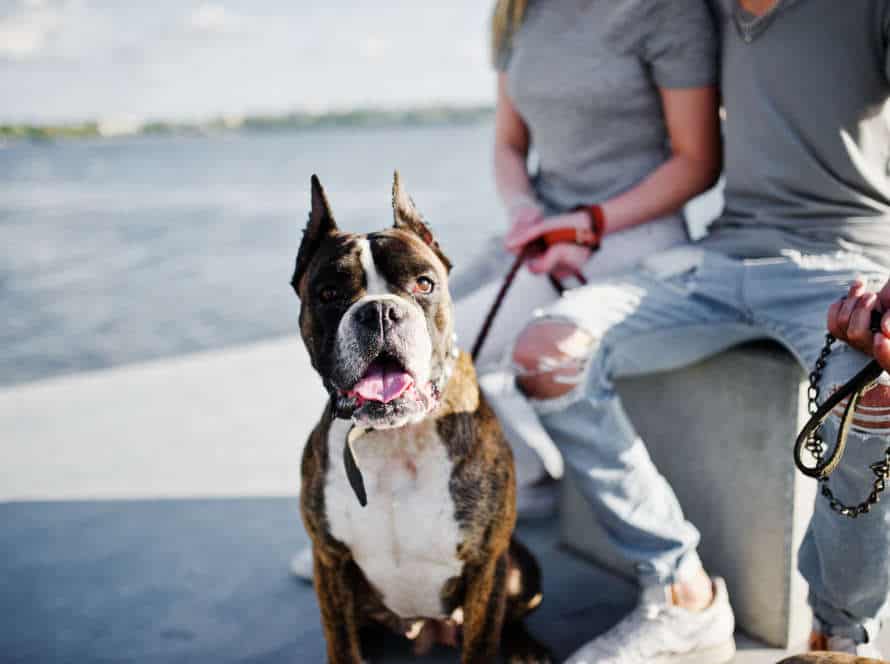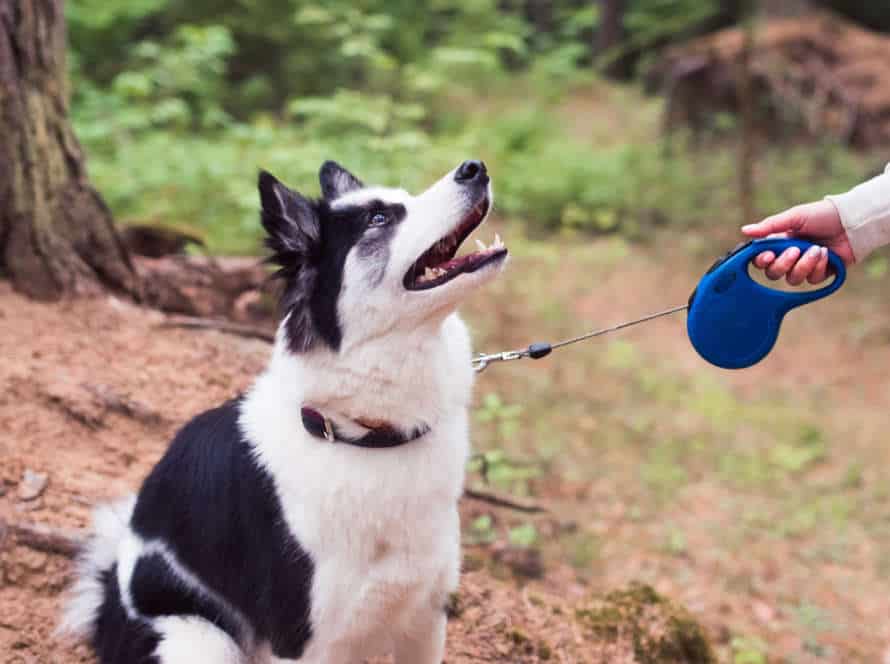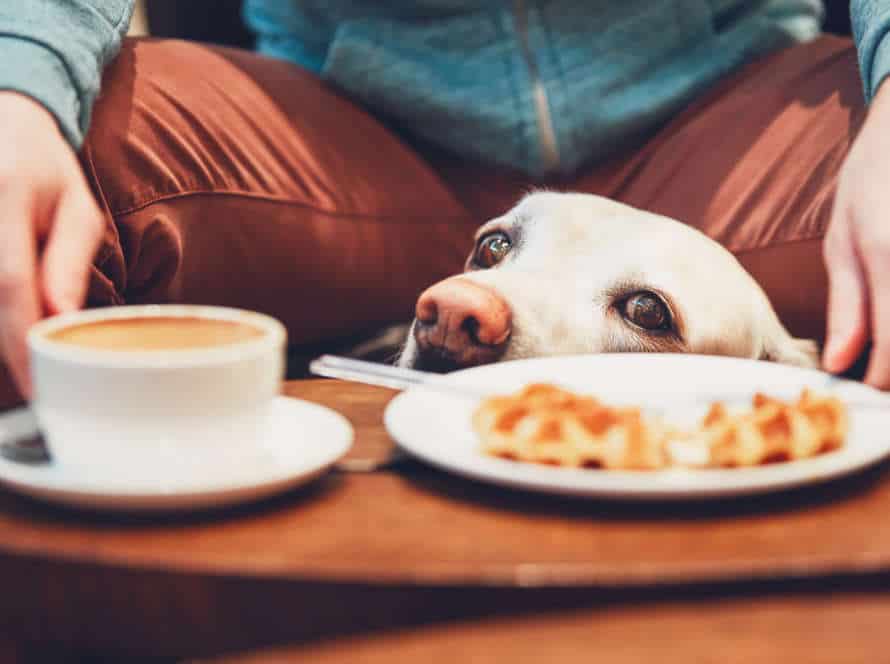Leash Training Milestones: What to Expect at Different Puppy Stages
Leash training your pup?
There are milestones to expect at different stages of development:
- 8-10 Weeks: Puppy’s still adjusting and may not take leash well. Be patient and give treats as reward.
- 10-16 Weeks: Puppy’s becoming coordinated, but may pull or tug. Keep leash short and praise good behavior.
- 4-6 Months: Easily distracted by new sights/smells. Consistency and patience are key.
- 6-12 Months: Confidence growing, may challenge your authority. Make sure you have control and keep reinforcing positive behavior.
- 12+ Months: Puppy’s mature and should be well-trained on leash. Keep practicing good habits and enjoy walks!
Setting the Foundation
Leash training your pup? Set a strong foundation! This is key for developing a lasting bond. Assess their understanding at different stages. Build their confidence as they grow. In this article, we will discuss the milestones. We’ll also tell you how to support them during leash training.
Understanding the importance of leash training
Leash training is a must for all pup owners. Here’s what to expect for different pup stages when establishing the basics:
- 8-10 Weeks: Pups may be adjusting to their new home. Get them used to wearing a collar and leash indoors.
- 3-4 Months: Pups are curious and energetic. Start leash training outdoors. Treats and positive reinforcement help.
- 6 Months+: Pups can walk for longer periods now. Keep training with rewards for good behavior.
Pups progress at different rates. Patience and consistency are key to mastering leash training.
Introducing the leash and collar
Introducing your puppy to a leash and collar is essential for successful leash training. Here’s what to expect at different stages of puppyhood:
- 8-10 Weeks: Puppies are still getting used to the world. Introduce the leash and collar gradually. Use treats to associate positive feelings with them.
- 10-14 Weeks: Puppies are curious and love exploring. Use a lightweight leash and let them lead the way. Don’t pull or correct too harshly.
- 14-16 Weeks: Puppies are asserting their independence and testing boundaries. Reward good behaviour, and redirect unwanted actions.
By six months, with consistent training, your puppy will be comfortable on a leash without pulling.
Getting your puppy comfortable with the leash
Puppyhood is the right time to start leash training. It can be easy and fun for both you and your pup, as you reach different milestones. Here are some tips to get you going:
- Let your puppy drag the leash around, so they can become used to it.
- Once they are comfortable, use it during outdoor playtime to show them how beneficial it is.
- As your puppy grows, practice loose-leash walking and reinforce with treats.
- You may have setbacks but each puppy is unique. Remember: consistency is key. Be patient and keep at it!
Early Puppyhood (8 – 12 weeks)
Puppyhood is important for leash walking in the future. Focus on positive reinforcement and start the process of socialisation, desensitisation and habituation. Important too: acclimating your pup to a leash and collar. Milestones for this stage: expect them!
Focusing on positive reinforcement
Focusing on positive reinforcement is a must for leash training your pup in their early stages (8-12 weeks). Here are some milestones to expect:
- 8-10 weeks: Puppies at this age are usually scared. Gently introduce them to the leash and reward them with treats and kind words.
- 10-12 weeks: At this point, pups are more okay with the leash. Encourage them with treats, verbal praise, and playtime rewards.
Remember, puppies respond best to positive reinforcement, not punishment or negative reinforcement. Encouraging good behavior with treats and rewards will make your walks together much more fun.
Starting simple obedience training
Leash training your pup is important for obedience. Start during their young puppyhood (8 – 12 weeks).
Milestones to expect:
- 8-10 weeks: Attach the leash during playtime. Allow them to get used to it.
- 10-12 weeks: They may follow you without pulling. Praise and reward them.
- 12-14 weeks: They may pull or go off-track. Stop and redirect with treats or toys.
Keep sessions short, positive and consistent. Pro tip: Use a lightweight and durable leash and collar for comfort and safety.
Short leash training sessions
Short leash training is great for your puppy’s early development. Here’s what to expect:
For 8-12 week old puppies, indoors is best. Training should only last 5-10 mins. Don’t pull or force them. Allow exploration, but stay close.
For 3-6 month old puppies, extend to 15 mins and start outdoor training. No harsh techniques.
For puppies over 6 months, increase the time and add obedience training. Use treats and praise to reward positive behavior.
Remember: consistency is key. Have short, frequent sessions with your puppy every day. Build a strong bond!
Adolescence (3 – 6 months)
Introducing a pup to a leash can be intimidating. But, the 3-6 month age range is great for beginning leash training. During this time, puppies can start to comprehend the expectations of walking with a lead. Teach them important commands such as “heel” and “walk.” Additionally, acquaint the pup to the idea of walking with a loose lead. This article will explore the leash training goals you can reach when working with a pup aged 3-6 months.
Dealing with common challenges
Puppy leash training can be tricky during the 3-6 month adolescence. Don’t despair though, as with patience and consistency, your pup can be a well-mannered companion. Here are some common challenges and how to manage them.
- Pulling on the leash – Your pup may be easily distracted and curious. Start short walks and use positive reinforcement to teach him to walk beside you.
- Fear or anxiety – It’s normal to feel scared when meeting new people, places, or objects. Gradually expose pup and use positive reinforcement to build confidence.
- Playful biting – Exploring can lead to playful biting. Redirect this with positive reinforcement and teach acceptable behavior.
With proper training and socialization, your puppy can grow into a happy adult dog.
Working on loose leash walking
Puppies go through stages during adolescence (3-6 months) that can affect their loose leash walking. It’s important for pet owners to know these stages to help their pup learn proper leash behavior. Here’s what to expect:
- 3-4 months: Puppies will explore and try to push boundaries. They may pull on the leash or refuse to walk straight.
- 4-5 months: Pups start to understand social cues better. They may still pull, but they’ll be more open to training.
- 5-6 months: Puppies get used to their environment and have better coordination. They’ll respond better to commands and need shorter training sessions.
To help your pup, use positive reinforcement like praise, treats, and toys. Teach them to focus on you, walk straight, and respond to commands like “stop” and “go.” Stay patient and consistent in your training.
Expanding obedience training
Leash training is key for puppies. Different stages of puppyhood need different goals.
From 3-6 months, puppy behavior and abilities change quickly. These are the leash training milestones for each stage:
- 3-4 months: Introduce puppy to the leash. Do short walks, use treats and praise as positive reinforcement.
- 4-5 months: Puppy should be getting comfy with the leash. Practice walking on different surfaces. Keep pup focused.
- 5-6 months: Work on loose-leash walking. Set realistic expectations. Still use positive reinforcement.
By following these milestones in adolescence, your pup will be ready for obedience training as they get older.
Mature Puppyhood (6 – 12 months)
When your pup is maturing (ages 6 – 12 months), it should know the basics, like “sit“, “stay“, and “come“. The “no” command is also important. Aim to teach your pup more complex commands and tricks when it has the basics down. Time to start leash-training too!
Mastering loose leash walking
Loose leash walking is vital. Every pup parent needs to master it, for a fun, safe walk. Training a puppy to walk on the loose leash requires patience and consistency. You need to know the different stages of puppy growth.
- 6-12 months: The pup’s in its ‘teenage’ stage. Acting stubborn or independent. Milestones to expect: Focusing more on environment, and pulling on the leash.
To help pup reach goal, practice short leash walks. Provide positive reinforcement for good behaviors. Redirect pup’s attention when needed. Set short-term goals, and reward progress often.
With dedication and a clear plan, any pup parent can learn loose leash walking!
Working with distractions
Leash training is key for puppies between 6-12 months old. At 6 months, your pup may be easily distracted. This is a great time to begin leash training and teach your pup to focus on you.
As they near 12 months, they may test their boundaries. They may pull and become resistant.
So, introduce distractions into training. Start with low-level distractions, like sounds or scents. Increase intensity over time. This will help your pup stay attentive even in distracting places. Remain patient and consistent.
Pro tip: Reward-based training works well. Use treats or toys as a reward when your pup stays focused during leash training.
Continuing obedience training and reinforcing good habits
It’s key to keep obedience training and good habits going during your pup’s mature puppyhood (6-12 months). Even though they’ve learnt the basics – like sit, stay, and come – this phase brings a new set of challenges that need persistence and patience.
When leash training, there may be resistance from your pup, but sticking to a routine helps reinforce good habits. Gradually extend the leash length to teach your dog how to act, then reward with treats and kind words to motivate them.
Every pup is different, so some habits may take longer to learn. But, with a lot of patience, persistence, and love, you can help your furry friend develop good behaviour and grow into a healthy, happy adult dog.
Adult Dog (12+ months)
Leash-training an adult dog doesn’t need to be as involved as for a puppy. Your dog should already know the basics, like walking on a leash, sitting and staying. But if your adult dog isn’t leash-trained, you can still work towards goals.
Let’s talk about expectations for leash-training an adult dog.
Advanced leash training techniques
Advanced leash training is a must to teach an adult pooch to stay calm on a lead, even in distracting places. Different phases of a pup’s life need different objectives to ensure successful leash training.
At 3-4 months: Present the lead as a toy & get pup comfy wearing it with a collar.
At 5-6 months: Teach basics like ‘heel’ and ‘walk’, and pup to follow pace & stay loose.
At 7-8 months: Gradually extend walk length & teach pup to ignore distractions.
At 9-12 months: Reinforce training & practice advanced commands like ‘stop’, ‘wait’ & ‘turn’.
To improve leash skills, no-pull harnesses, martingale collars, minimizing distractions during walks, & rewarding good behaviour are all helpful. Following a leash training plan builds a positive bond & allows fun walks without hassle.
Maintaining good leash behavior
It is essential to consider leash training milestones for adult dogs. To maintain good leash behavior, use a sturdy leash and collar that fits correctly. Start walks in quiet areas and then progress to busier spots. Reward good behavior with treats or praise. Correct bad behavior with a firm “no” and gentle tug. Avoid long, frequent tugs which can cause neck pain or injury. Always end walks on a positive note with a reward. Consistent reinforcement of good behavior will create a healthier walk routine, making both pet and owner happier.
Pro Tip: Exercise and training not only benefits the body, but boosts mental and emotional health too!
Troubleshooting common problems
Leash training adult dogs can be hard. Knowing the normal issues that can appear will help you find solutions and reach training goals.
Here are typical troubles:
- Pulling: Dogs often pull on leashes, particularly when they are excited or curious. Use a front-clip harness, show your dog to walk by you, and give rewards for good behaviour.
- Lunging and Jumping: If your pup lunges or jumps at other dogs or people, use positive reinforcement to reward calmness around distractions. Use a K9 training collar only as a last option.
- Refusing to Walk: If your dog won’t walk or stops while on walks, it may be because of fear or anxiety. Introduce your pup to new situations slowly. Use positive reinforcement and hire a professional dog trainer if necessary.
- Inconsistency: Inconsistent training can confuse your dog and stop progress. Be consistent with commands, rewards and expectations.
Every dog is different, so training needs to be adapted. With patience, consistency and positive reinforcement, you can succeed with leash training your adult dog.
Frequently Asked Questions
1. When should I start leash training my puppy?
Leash training can start as early as 8-10 weeks old when your puppy has received their first set of vaccines.
2. How long should my puppy walk on a leash?
For puppies, start with short, 5-minute walks and gradually increase the time as they become more comfortable on the leash. A good rule of thumb is to walk your puppy 5 minutes for every month of age.
3. How do I introduce my puppy to the leash?
Start by getting your puppy comfortable with the collar or harness first. Then, attach a lightweight leash and let your puppy drag it around the house so they can get used to the feeling. Finally, start taking them on short walks with you holding the leash.
4. How do I teach my puppy to walk on a leash without pulling?
When your puppy pulls on the leash, stop walking and wait for them to come back to your side. Reward them with a treat when they do. Repeat this process until your puppy learns to walk calmly on the leash by your side.
5. Can I use a retractable leash to train my puppy?
No. Retractable leashes allow your puppy to pull and can result in injury for both you and your puppy. It’s best to use a standard leash for training.
6. At what age should my puppy be ready for off-leash walks?
Off-leash walks should only be done in secure, fenced areas and with a puppy that reliably responds to commands. Most puppies are not ready for off-leash walks until they are at least 6 months old.

